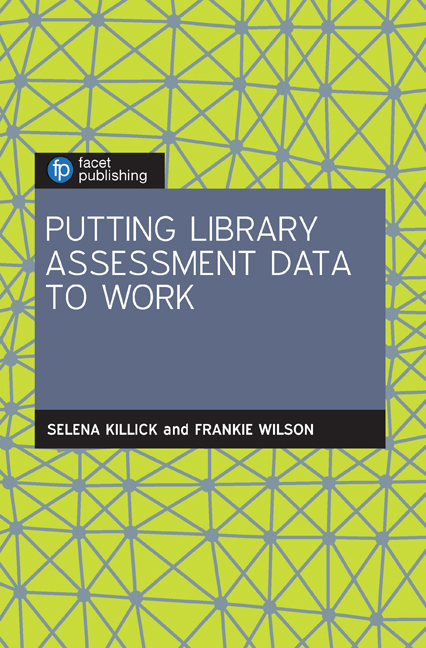Book contents
- Frontmatter
- Dedication
- Contents
- List of figures and tables
- List of case studies
- Authors and contributors
- Acknowledgements
- 1 Introduction to Library Assessment
- 2 Institutional Measures of Student Satisfaction
- 3 Standardised Library Surveys
- 4 In-House Library Surveys
- 5 Library Statistics
- 6 Qualitative Feedback
- 7 Emerging Techniques
- 8 More than Measuring: using Assessment Holistically
- 9 Conclusions
- Index
3 - Standardised Library Surveys
Published online by Cambridge University Press: 02 October 2019
- Frontmatter
- Dedication
- Contents
- List of figures and tables
- List of case studies
- Authors and contributors
- Acknowledgements
- 1 Introduction to Library Assessment
- 2 Institutional Measures of Student Satisfaction
- 3 Standardised Library Surveys
- 4 In-House Library Surveys
- 5 Library Statistics
- 6 Qualitative Feedback
- 7 Emerging Techniques
- 8 More than Measuring: using Assessment Holistically
- 9 Conclusions
- Index
Summary
Chapter overview
In this chapter we explore some of the more common standardised library survey methodologies, and share case studies from three libraries whose staff have used these forms of assessment. Standardised library surveys, commonly developed by national library associations or commercial providers, focus on assessing customers’ perceptions of the library service in a consistent manner. These surveys have enabled library staff to assess their users’ requirements and satisfaction levels with limited development costs; their key strength is the ability to compare performance against sector averages and/or other libraries using the same methodology.
Typically the questions evaluate common aspects of library provision at a broad level, for example by asking respondents about their perceptions of library information provision. Library staff choose this methodology if they wish to compare their service with other libraries where similar surveys are used, or as an aggregated data set thereof. They may also choose a standardised tool if they wish to evaluate the library services at a general, broad level without going to the expense of developing a bespoke local survey. Users of standardised tools typically repeat the methodology over a period of time to assess the impact any changes have had and to monitor customers’ perceptions longitudinally. Standardised library surveys cannot evaluate local issues, for example perceptions of a unique or uncommon service.
Standardised library surveys are a long-established form of assessment. In 1990 the American Library Association published Measuring Academic Library Performance: a practical approach, providing libraries with a standardised survey tool (Van House, Weil and McClure, 1990). Previous assessment activity had focused on quantitative measures of library expenditure and operational activity. Van House, Weil and McClure sought to address the gap in assessing user experience of libraries. They provided different survey tools in the book, including a general satisfaction survey and one focusing on material availability, tabulation forms for survey analysis and examples of data presentation.
In the UK the Society of College, National and University Libraries (SCONUL) launched a standardised survey for libraries to deploy locally in 1996 (Revill and Ford, 1996). This briefing paper provided academic libraries with questions they were free to adapt to local circumstances, but reduced the time needed for a library to create a survey themselves.
- Type
- Chapter
- Information
- Putting Library Assessment Data to Work , pp. 31 - 54Publisher: FacetPrint publication year: 2019

